Bamboo is a robust and versatile addition to the garden, but its large rhizomes and vast root system mean it needs a bit of special handling to be moved successfully.
Quick to spread, bamboo is grown for its stately architectural form, with tall, elegant stems (aka culms) forming dense stands with lush, evergreen foliage – perfect for tall hedges and privacy screens.

We link to vendors to help you find relevant products. If you buy from one of our links, we may earn a commission.
Many varieties are tree-like in size, but bamboo is a subfamily (Bambusoideae) of the grass family (Poaceae) with two main types of growth, clumping and running forms.
The clumping varieties have shallow rhizomes that form thick, hard root balls. Growth is more manageable than it is with the running type, and clumps spread gradually and evenly in all directions.
The running varieties have deeper rhizomes with mats of smaller surface roots, and spread via runners, with new shoots popping up in random locations. If it’s not kept in check, this type can quickly run amok.
Regardless of their form, splitting and moving these plants is done using the same process. But with their deeper roots, you can expect lifting or splitting the running types to require a bit more work!
So before you roll up your sleeves and grab your tools, let’s have a look at how and when to divide, move, and transplant bamboo.
Here’s what’s coming up:
How to Divide and Transplant Bamboo
Tools for the Job
As mentioned, these plants form an intense root system.
And if yours has become overgrown or crowded, it’s going to take a bit of work to lift or divide, and you’ll need some good tools to make the job easier.

To lift the roots, use a clean, sharp spade or garden fork.
To cut thick rhizomes into manageable sections, you’ll need a clean, sharp spade, a handsaw, or an axe. And for very dense, tangled roots, a chainsaw is often the best option.
Also, a sturdy garden knife or hori hori is useful for prying smaller roots apart.
And you’ll need a bucket of water to hold root balls in between locations.
When to Transplant
Both types of bamboo are prolific growers. They need to be transplanted in early spring before new growth appears, or in autumn after the growing season has ended.

The robust but delicate roots are sensitive to sunlight and a lack of moisture, so avoid moving them when the sun is hot and high. Cloudy days with light mist or rain are ideal for transplanting.
But before you begin to dig up your existing stand, prepare the new site first.
The roots dry out quickly and need to be transplanted promptly – the longer they’re above ground, the less likely their chances of survival.
Prep the New Site
For the best chances of success, replant divisions immediately. Make sure the new locations are prepped before they’re dug up, so the roots don’t dry out.
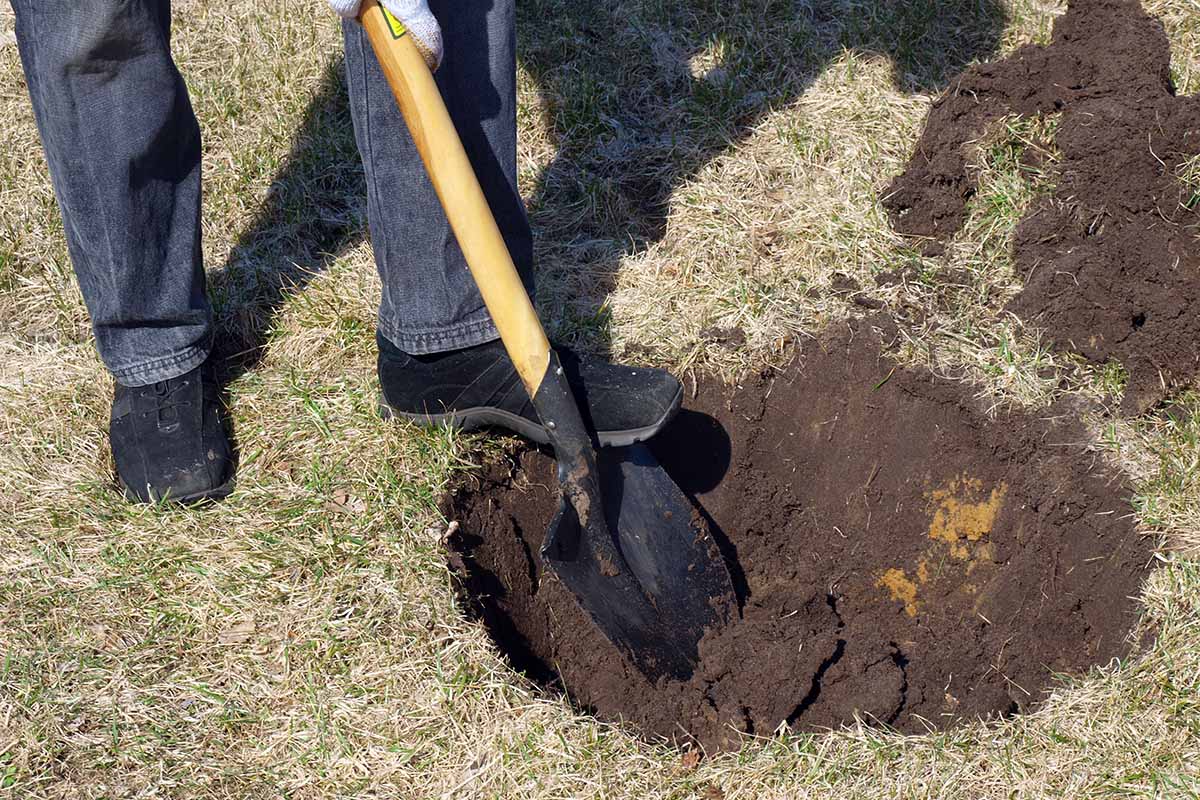
Bamboo does best in a full sun location with well-draining, fertile soil and a slightly acidic to neutral pH of 5.0 to 6.5.
Use a garden fork or shovel to dig a hole twice as wide as the root ball and about the same depth – most root growth extends sideways and not that deep.
Amend the soil by adding one to two parts of compost or well-rotted manure to one part of soil to improve fertility.
Add one part landscape sand, pea gravel, perlite, or stone chips to ensure well-draining soil – root rot can develop if plants are growing in soggy or waterlogged conditions.
And to help hold soil moisture, mix in one part water-retentive materials such as coconut coir, peat moss, perlite, or vermiculite.
While these grasses need well-draining soil, to keep the moisture-loving roots happy, it shouldn’t be allowed to completely dry out.
Water the soil deeply before transplanting – a moist environment is the most welcoming for the sensitive roots.
For container growth, choose pots large and stout enough to hold the vigorous roots, and heavy enough to anchor the tall, mature culms.
We’ll cover dividing and transplanting potted bamboo in more detail in a future guide.
How to Lift, Divide, and Transplant Bamboo
To lift a clump, use a spade to cut through the soil about 12 inches out from the stems. Slice down to the full depth of the blade and completely encircle the clump.
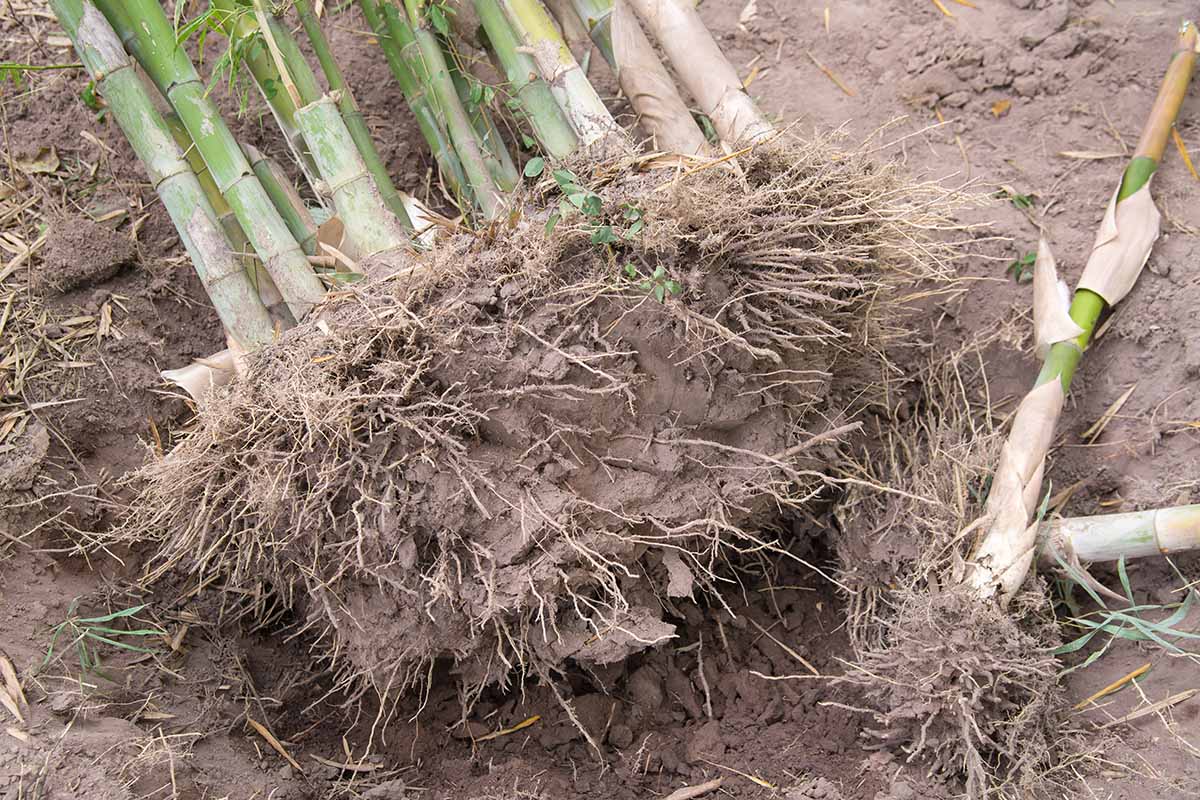
Select the best areas for division by finding natural gaps in the growth where you can separate the rhizomes. Each new section should have several healthy, mature culms.
Use a clean, sharp spade, axe, or handsaw to cut through the roots and create divisions, slicing through the fibrous roots and rhizomes to a depth of 12 inches. Start slicing at the soil edge and work your way into the center from both sides.
Loosen each section by swaying it back and forth, then use the spade as a lever under the roots to lift out each section.
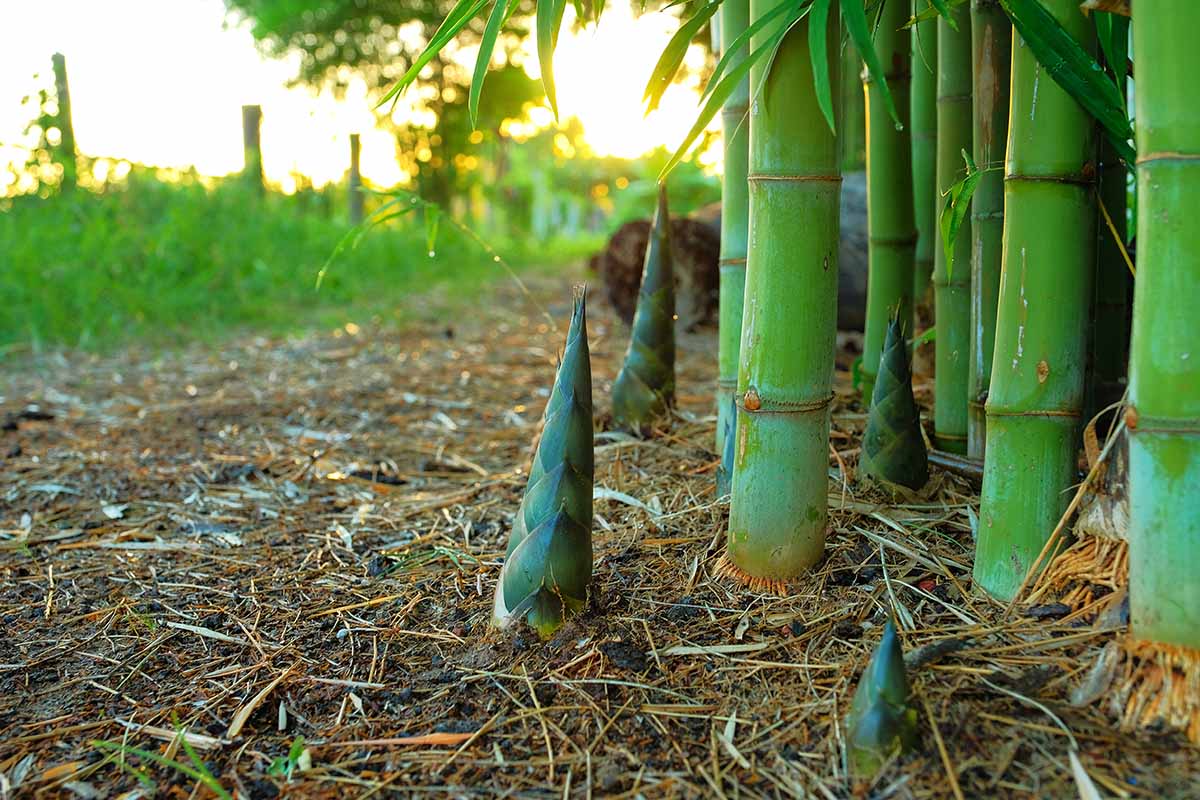
For large stands with very dense rhizomes, use a chainsaw to cut through the roots, slicing down 12 inches. And of course, always wear protective clothing and safety glasses when using a chainsaw.
To thin or divide stands that have become forest-like, try my neighbor’s trick – he cut his grove into “islands” with a chainsaw then hooked each island with the winch on his pickup truck to pull them out. Slick as!
If you’re not transplanting immediately, plunge each root section into a bucket of water and lean the stand against a fence or tree. Or run a sprinkler or garden hose with the nozzle on the mist setting to keep oversized clumps moist.
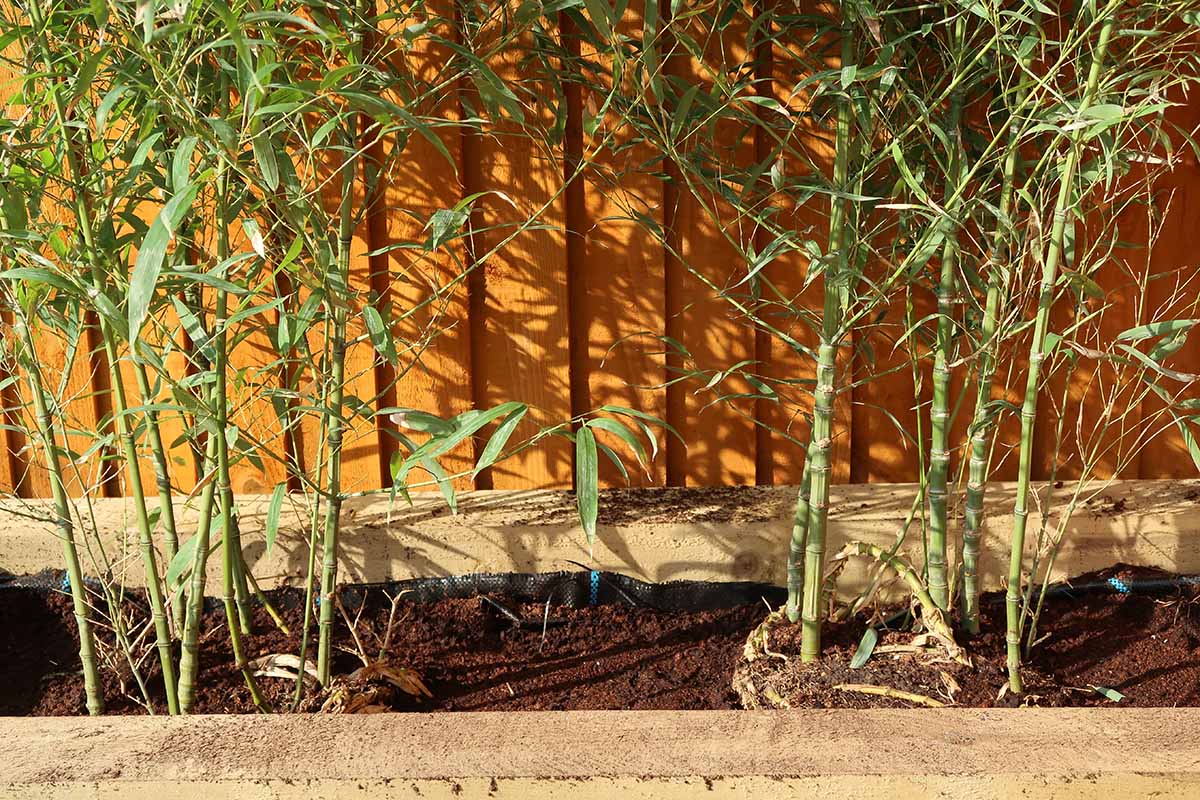
Transfer each section to its new location. Backfill with soil and firm in place. Water gently but deeply.
To help keep the roots moist, add a two- to four-inch layer of mulch made from organic materials, such as compost, grass clippings, or leaf mold.
To help reduce transplant shock and ensure plants get established, provide up to two inches of water per week to keep the soil lightly moist but not wet.
Sleep, Creep, and Leap
Although bamboo is fast-growing, it can take new divisions one to three years to become fully established, depending on the type.
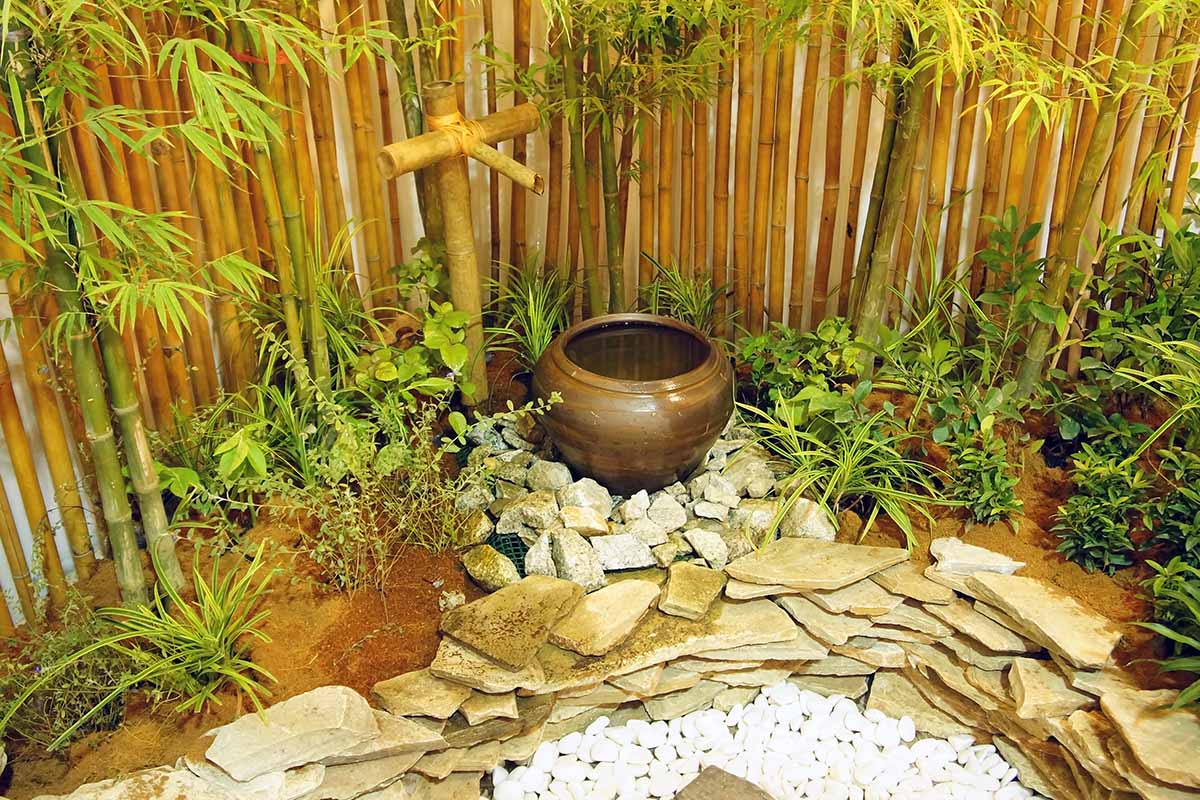
Keep the following bamboo adage in mind if you’re concerned about slow growth after transplanting.
“The first year it sleeps, the second year it creeps, the third year it leaps.”
And be sure to start out with the best conditions for success – prep the new location first, have the right cutting tools for the job at the ready, and keep the soil moist to quench those thirsty roots.
After the job is done, you can kick back and enjoy your private tropical forest!
Are you growing bamboo? Have you tried transplanting it? Let us know in the comments section below!
And for more information about bamboo, check out these guides next: